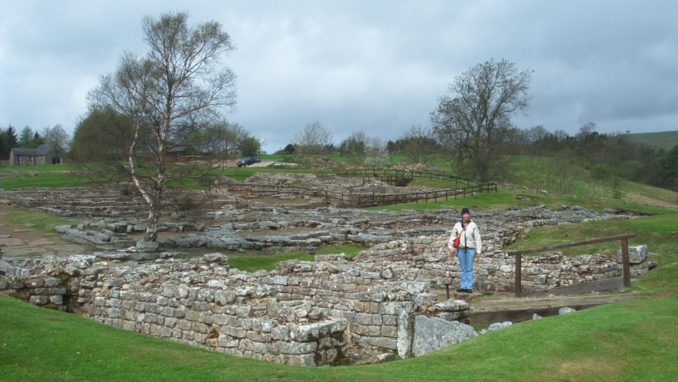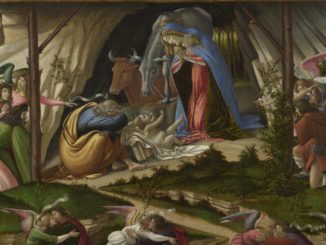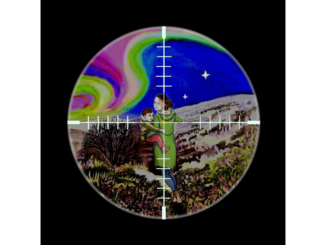
© Going Postal 2021
My review of John Morris’ The Age of Arthur caused quite a stir and clearly there remains much interest in the British Dark Ages, and especially in the thorny issue of Arthur and his existence. Such a level of interest is fully merited because these few centuries are the formative period in our history, when the differing parts and identities of the British Isles were created, when our demographics were formed, and when the one characteristic that unified all these different peoples, polities and cultures took root and won out – the conversion of the isles to Christianity.
The bibliography of Arthuriana, let alone the Dark Ages, is immense and much of it pretty flakey at either end of the spectrum from belief to disbelief, but there is one other book, brilliantly researched with a fascinating central thesis, which is worth considering because it looks at the issue from a radically different angle. For me, much of it is convincing, even if the central argument – that Arthur was a real figure, a British cavalry leader based, operating in the Scottish Borders – is a conclusion too far. Where it is on surer ground, and highly persuasive and well evidenced, is that the Scottish Borders, north and south of Hadrian’s Wall, were British-Welsh kingdoms based on the four tribes of the Roman era: the Selgovae of the central Borders, the Novantae of Dumfries & Galloway, the Damnonii of Ayrshire and Clydeside, and the Votadini of Northumberland up to and including Lothian.
Now much of this will not be a surprise to readers of books like the Age of Arthur – the Welsh peoples of the Scottish Borders may be largely forgotten today but are well known to historians. Indeed, the last of the British kingdoms – Strathclyde (incorporating Clydeside, Ayrshire, Dumfries & Galloway, and Cumbria, survived until about 1000 AD, and Welsh as a language seems to have lingered in parts of the Borders into the Middle Ages. Where Moffat excels is looking at the region from its first settlement by the pre-Celts after the retreat of the glaciers, its topography and its influence on its inhabitants, the arrival of the Celts and then the Romans and the impact of the latter, and finally their emergence as Roman successor states and role in resisting the assaults of the Picts, Irish and Anglo-Saxons on the post Roman British.
It’s a detective story in part, written by a generations-bred Scottish Borderer with a real love and fascination of their turbulent history. It fascinated me very early on when Moffat mentions the ancient tradition of the ‘Common Ridings’ of the region, their origins and also the statue of a Hawick horseman in the centre of Hawick with the inscription ‘Teribus Ye Teriodin’ whose meaning had been forgotten until he realised that it was a form of Welsh – Tir y Bas y Tir y Odin – or ‘The Land of Death, the Land of Odin’, harking back to the pre Christian British era of the Borders, into the 5th century AD and earlier, and with an ancient tradition of horsemanship. It’s little remembered now but the Celts were great horse warriors, providing the Roman army with a significant part of its cavalry, and the ownership of horses was something of real status in Celtic culture just as it is associated with aristocracy and wealth even today, and this was no less the case for the Celtic tribes of the Borders as it was for their descendants the Border Reivers.
The subject of Romano British cavalry and horsemanship is central to Moffat’s central thesis – that the Northern ‘Lost’ British kingdoms helped to keep the barbarian invaders at bay for over a century by their use of highly mobile cavalry units to which the invaders had little answer, and that they were the source of the success of leaders like Arthur. This may seem far fetched today but the evidence is compelling. The Late Roman army was very different to the massed heavy infantry legions we imagine. The threats were too many and varied, too many frontiers were under constant attack, and the army had evolved into local garrison frontier units and a number of mobile field armies of which cavalry had become an important component. Partly this was in response to horse riding barbarian tribes like the Sarmatians and the heavy cavalry and horse archer armies they faced in the Parthians and Sassanid Persians on the eastern frontier, from whom the Romans copied fully armoured riders and horses used as shock troops. Against the loosely organised and lightly armoured Saxons, Irish and Picts, small units of such heavy horseman could be devastating. In the 460s in Gaul for instance, a small unit of just 18 such heavy cavalry put together by a Roman aristocrat called Ecdicius routed an army of several thousand barbarian invaders. We know that the Romans did station of number of such units in northern Britain, and although the Roman field army in Britain left just after 400 AD, many of the local garrison units stayed behind and it is highly likely that the tradition of such cavalry units had taken root in the province as had the bloodstock infrastructure. Indeed, Sarmatian heavy cavalry auxiliaries serving in the Roman army had been posted for the long term to Britannia.
Moffat then builds his thesis, discussing the Welsh tradition that a cavalry leader (Cunedda) from the North (the Borders) brought a unit of 900 horseman south to expel the invading Irish from settling in Wales a couple of decades after the Roman withdrawal – the archaeological evidence certainly supports this idea of a rapid reversal of the conquest of Wales by Irish settlers. He builds his argument by discussing the reorganisation of Britannia’s defences by Theodosius after he defeated the ‘Great Barbarian Conspiracy’ of 367 AD which had seen northern frontier units betray the frontier to the Picts and others. This reorganisation seems to have seen the British tribes north of Hadrian’s Wall brought securely into Rome’s orbit as allies under Roman appointed officers, one of whom – Paternus of the Votadini – is said to have been Cunedda’s father, or more probably, his grandfather.
So Moffat builds his case of Cunedda as a prototype for a later Arthur, campaigning in Wales, drawn from a Romanised Northern British tribe who were paid by the Romans to provide defence in depth north of the Wall. I find it persuasive, but less so when he goes on to argue that Arthur was a later Cunedda from the far North. Yes, the Goddodin, the Homeric and very early epic of the Votadini mentions the warrior hero Arthur in passing and. yes, a whole series of northern princes were for a generation or two thereafter named after an Arthur, but this is not sufficient evidence to overturn the mass of tradition that Arthur was from the south of the province. However, his arguments and the picture he assembles of the semi Romanised North of Britannia is fascinating and opened my eyes to world now long forgotten.
Moffat is very much in the tradition of John Morris in his attitude to the various ancient sources; he treats them with respect and as largely truthful unless they can be proven to be dishonest, and shows on a smaller scale than Morris how much more we can learn about the ‘Dark Ages’ if we just don’t dismiss ancient poetry etc as being entirely without historical merit. Where he goes further, and for me this is perhaps the most interesting part of the book, is his examination of the topography of the region and the rooting of his history in it and the relationships between the two. The central role of Celtic meeting centres of the region like Eildon Hill North {ancient Trimontium}, Kelso Abbey and the lost city of Roxburgh are brought to life. The areas north of Hadrian’s Wall weren’t just full of barbarians but possessed a number of semi Romanised British Celtic statelets which survived the collapse of Roman power and which played an important role in not only defending the Northern Frontier but also in helping defend the Province south of the Wall. They survived under different names as states until well into the Anglo-Saxon period, with the last, the kingdom of Strathclyde with its capital at Dumbarton (“Rock of the Britons”), surviving until the beginning of the second Millennium.
It’s a fascinating story and one that deserves to be told, not forgotten, and Moffat’s book does it justice with one proviso. Whether you believe his central thesis about the northern identity of Arthur is your choice and almost irrelevant, because his real achievement is uncovering these peoples and their history from the mists of time. He writes well, the illustrations and maps are very helpful, but my major criticism would be his neglect of the coming of Christianity to the area.
The first Christian presence of which we know was St Ninian’s early 5th century missionary settlement at Whithorn (“the White House”) in Dumfries & Galloway, just over the Wall from Roman Carlisle. How it happened we don’t know and Moffat doesn’t investigate it, but by the end of the 5th century it seems the Britons North of the Wall had largely adopted Christianity, something that undoubtedly strengthened their ties with their fellow Britons and P-Celtic (the progenitor of Welsh) speakers South of the Wall and increased their estrangement from the pagan Q-Celtic (Gaelic and Pictish) speakers North of the old Antonine Wall.
These cultural differences lingered even after the Borders were incorporated into Scotland and the Scottish kings’ writ never really ran securely in the Borders whose inhabitants had more in common with the English Borderers with whom they intermarried freely and shared a common culture and distinctive Border Law, until the Union of the Crowns under James I/VI. Given that the territory of the Votadini and Selgovae straddled both sides of Hadrian’s Wall and the modern border, perhaps we should not be too surprised.
Amazon link if you can’t see the ‘ad’ above: Arthur and the Lost Kingdoms
© JD de Pavilly 2021
The Goodnight Vienna Audio file
Audio Player



